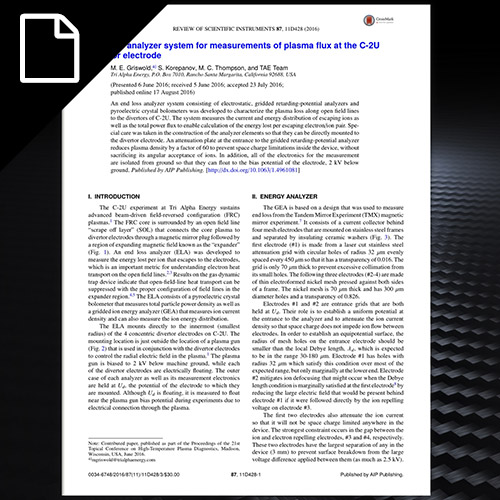
Aug 2016 | Research Library, Papers, Diagnostics, Experiment, Fusion Energy, Fusion Research, Fusion Science, Fusion Technology, Top Level
August 2016 | M. E. Griswold | Review of Scientific Instruments | Paper
An end loss analyzer system consisting of electrostatic, gridded retarding-potential analyzers and pyroelectric crystal bolometers was developed to characterize the plasma loss along open field lines to the divertors of C-2U. The system measures the current and energy distribution of escaping ions as well as the total power flux to enable calculation of the energy lost per escaping electron/ion pair.
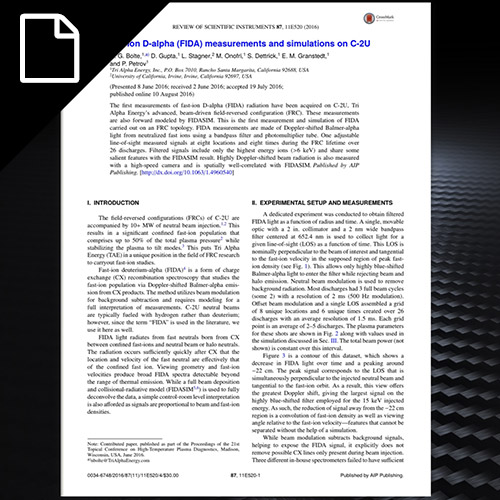
Aug 2016 | Research Library, Papers, Diagnostics, Experiment, Fusion Energy, Fusion Research, Fusion Science, Fusion Technology, Top Level
August 2016 | N. G. Bolte | Review of Scientific Instruments | Paper
The first measurements of fast-ion D-alpha (FIDA) radiation have been acquired on C-2U, Tri Alpha Energy’s advanced, beam-driven field-reversed configuration (FRC). These measurements are also forward modeled by FIDASIM. This is the first measurement and simulation of FIDA carried out on an FRC topology.
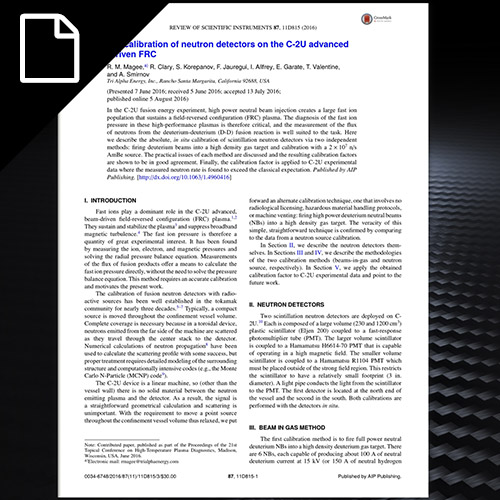
Aug 2016 | Research Library, Papers, Diagnostics, Experiment, Fusion Energy, Fusion Research, Fusion Science, Fusion Technology
August 2016 | R. M. Magee | Review of Scientific Instruments | Paper
In the C-2U fusion energy experiment, high power neutral beam injection creates a large fast ion population that sustains a field-reversed configuration (FRC) plasma. The diagnosis of the fast ion pressure in these high-performance plasmas is therefore critical, and the measurement of the flux of neutrons from the deuterium-deuterium (D-D) fusion reaction is well suited to the task.
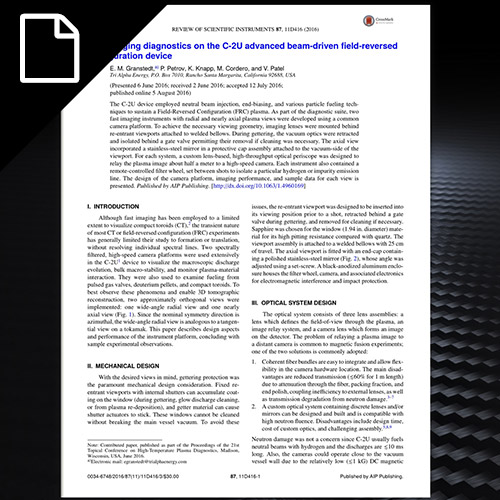
Aug 2016 | Research Library, Papers, Diagnostics, Experiment, Fusion Energy, Fusion Research, Fusion Science, Fusion Technology
August 2016 | E. M. Granstedt | Review of Scientific Instruments | Paper
The C-2U device employed neutral beam injection, end-biasing, and various particle fueling tech- niques to sustain a Field-Reversed Configuration (FRC) plasma. As part of the diagnostic suite, two fast imaging instruments with radial and nearly axial plasma views were developed using a common camera platform.
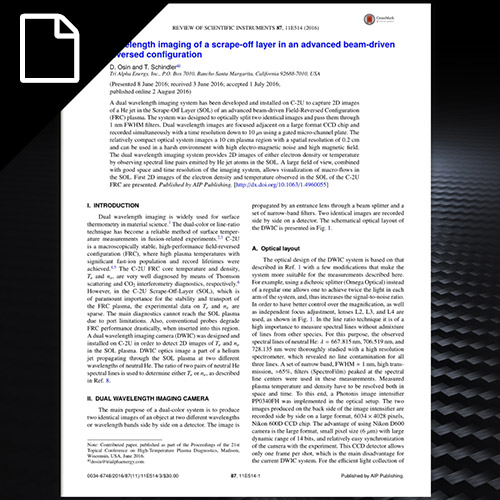
Aug 2016 | Research Library, Papers, Diagnostics, Experiment, Fusion Energy, Fusion Research, Fusion Science, Fusion Technology
August 2016 | D. Osin | Review of Scientific Instruments | Paper
A dual wavelength imaging system has been developed and installed on C-2U to capture 2D images of a He jet in the Scrape-O↵ Layer (SOL) of an advanced beam-driven Field-Reversed Configuration (FRC) plasma. The system was designed to optically split two identical images and pass them through 1 nm FWHM filters.




